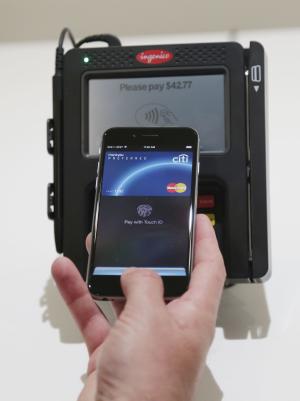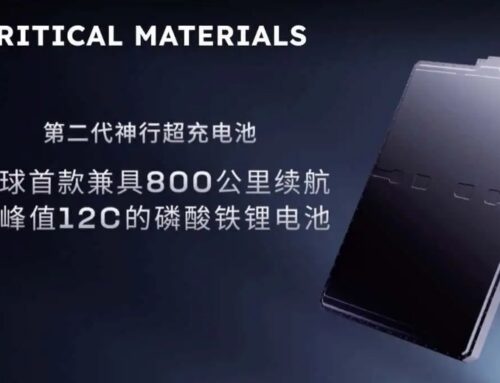Apple Pay set to square off against retailers with their own mobile pay plans
October 19, 2014
Starting on Monday, millions of people who bought an iPhone 6 or 6 Plus will be able to go shopping with Apple Pay, the company’s new wireless mobile payment program.
Shoppers will have to add at least one Visa (V), Mastercard (MA) or American Express (AXP) card from a participating bank to Apple’s (AAPL) Passbook app on their phone to get started. Once Apple Pay is set up, to make a payment, a customer simply touches the iPhone fingerprint sensor while next to the cash register.
It may be a fast and easy new way to zip through the checkout line, but while many top retailers, including Macy’s (M), Whole Foods (WFM) and Walgreen (WAG), will be accepting Apple Pay, the iPhone system won’t work at other leading chains such as Wal-Mart (WMT), Target (TGT) and Starbucks (SBUX).
Many of the stores that won’t accept Apple Pay have a simple explanation: They haven’t installed more expensive checkout terminals that have a Near Field Communication, or NFC, chip that’s required to transact via Apple Pay. That’s also why older iPhone users can’t play along — the phones don’t have NFC chips, either.
Starbucks, for example, has said it won’t accept Apple Pay in stores because of a lack of NFC capability. It will allow customers to refill money into the Starbucks card app on a phone using Apple Pay, however.
Only about 220,000 out of some 8 million retail locations in the United States will be equipped for Apple Pay this month, the firm says. After all the recent hacking incidents, however, stores are rapidly upgrading their terminals and most of the new models include NFC chips.
Apple’s Bet on Credit Card Networks
Ultimately, the more difficult challenge may be a result of Apple choosing sides in the decades-long battle between retailers and the banking and credit card industries over transaction fees.
“Some people say the merchants and the card brands have a love-hate relationship,” says James Wester, research director for payment strategies at IDC. “But if you ask the merchants, they’ll say it’s just a hate-hate relationship.”
At the most fundamental level, retailers have been fighting to reduce the fees they pay on credit card purchases, typically about 2% per transaction, or some $41 billion in total in 2012, according to one study. They also want to be freed from restrictive terms around accepting various kinds of cards. The battle has raged through the courts, where several cases are pending.
Apple decided to partner with the three major credit card networks and card-issuing banks. That may have been a smart move – Google (GOOGL) doesn’t have many major partners for its mobile wallet, which has thus far been a bust. Then again, Softcard, which includes credit card companies and wireless carriers, has also flopped. It lacks major retail partners and requires that customers obtain a new secure SIM card for their phones.
When a customer uses Apple Pay, they are still essentially paying via a credit card and the store will have to pay the usual fee on each purchase to the banks. The banks are paying Apple a small fee, reportedly 15 cents out of every $100 transaction.
Wal-Mart, Target and others have formed their own group for mobile payments, one that could shake up the banking industry if it catches on. Called the Merchant Current Exchange, the group is developing an app called CurrentC that will let consumers pay via mobile phone, similar to Apple Pay.
The system, which hasn’t opened to the public yet, may be more cumbersome for consumers than Apple Pay since it relies on an app that generates bar codes instead of wireless NFC signals. But that also means it can work on hundreds of millions of existing phones that don’t have NFC chips.
More importantly, consumers won’t be able to fund their CurrentC purchases with credit cards. They’ll have to use a debit card, gift card or direct connection to their bank account to fund each purchase. Retailers pay considerably less for those types of payments – about 12 cents on debit card transactions, for example.
Customers who use CurrentC may also get special discounts or loyalty rewards, similar to the 5% discount that Target gives customers who use its “REDCard.” But there’s also an exclusivity element. Stores participating in the CurrentC program must agree not to accept any other mobile wallet, such as Apple Pay. A spokeswoman for the group declined to comment.
By the time CurrentC rolls out to the public next year, Apple will already have a significant head start. So while the battle between the two sides rages, consumers may have to switch up how they pay depending on where they’re shopping.
Search
RECENT PRESS RELEASES
Related Post





